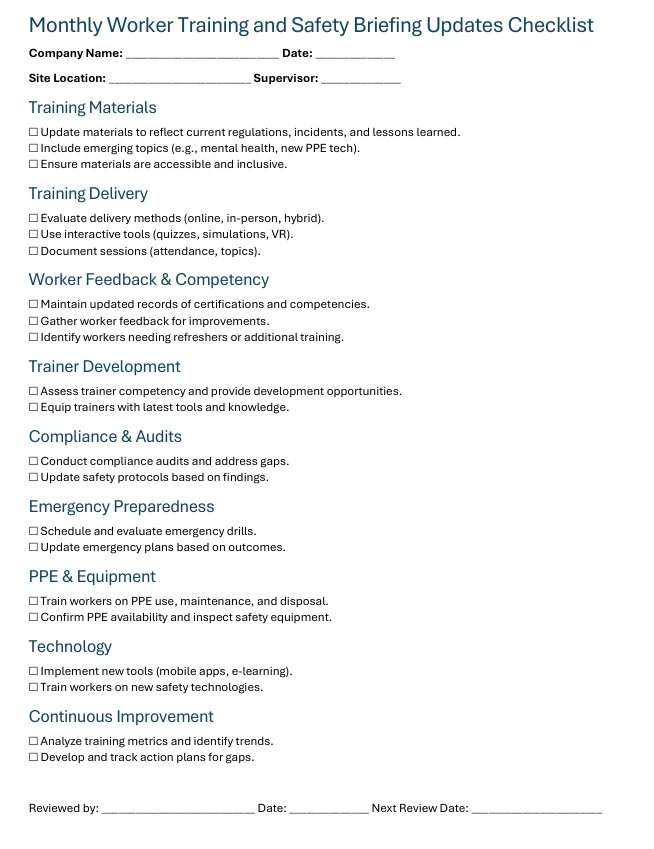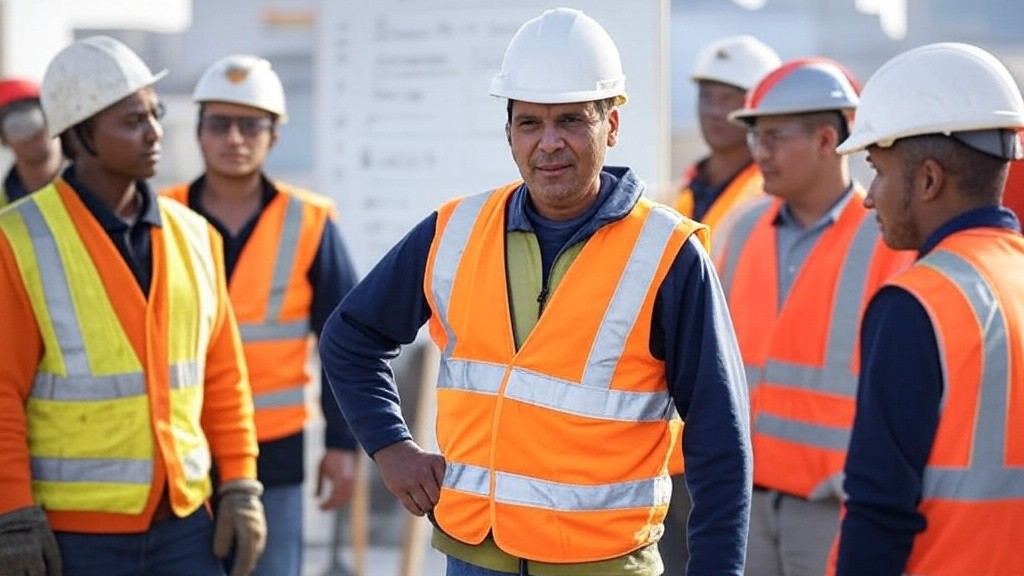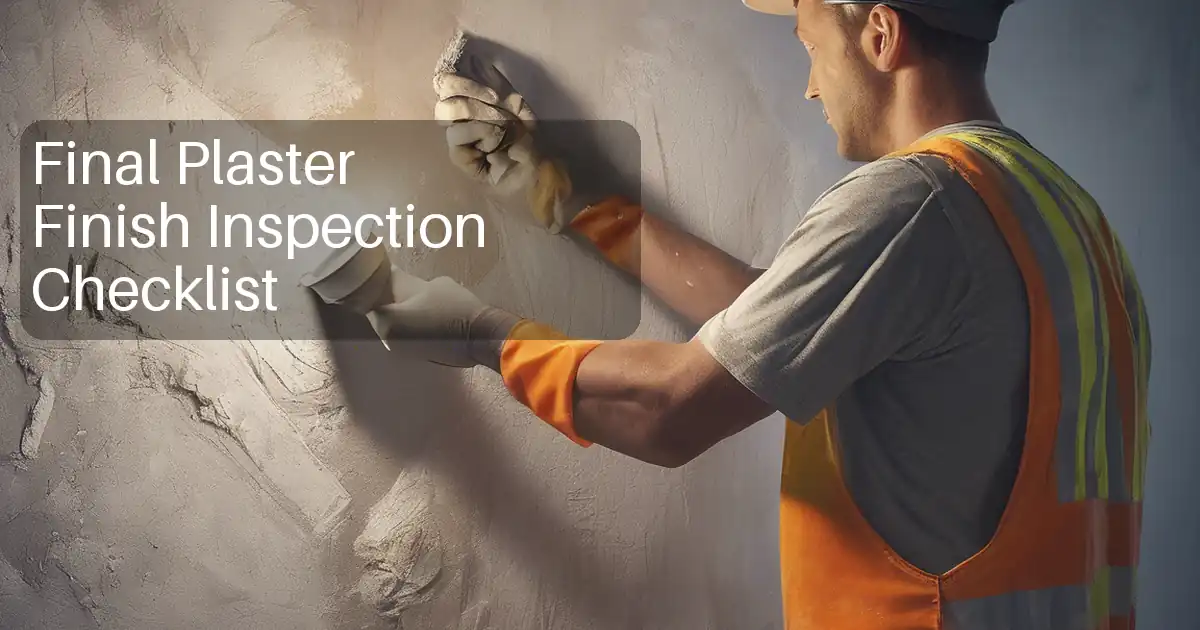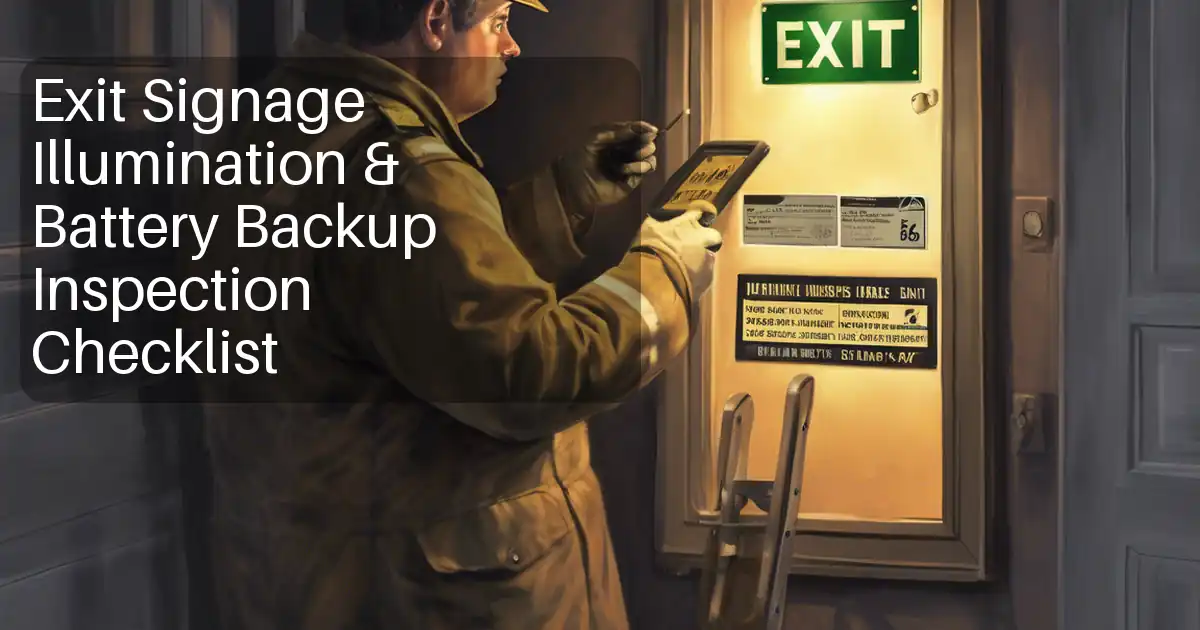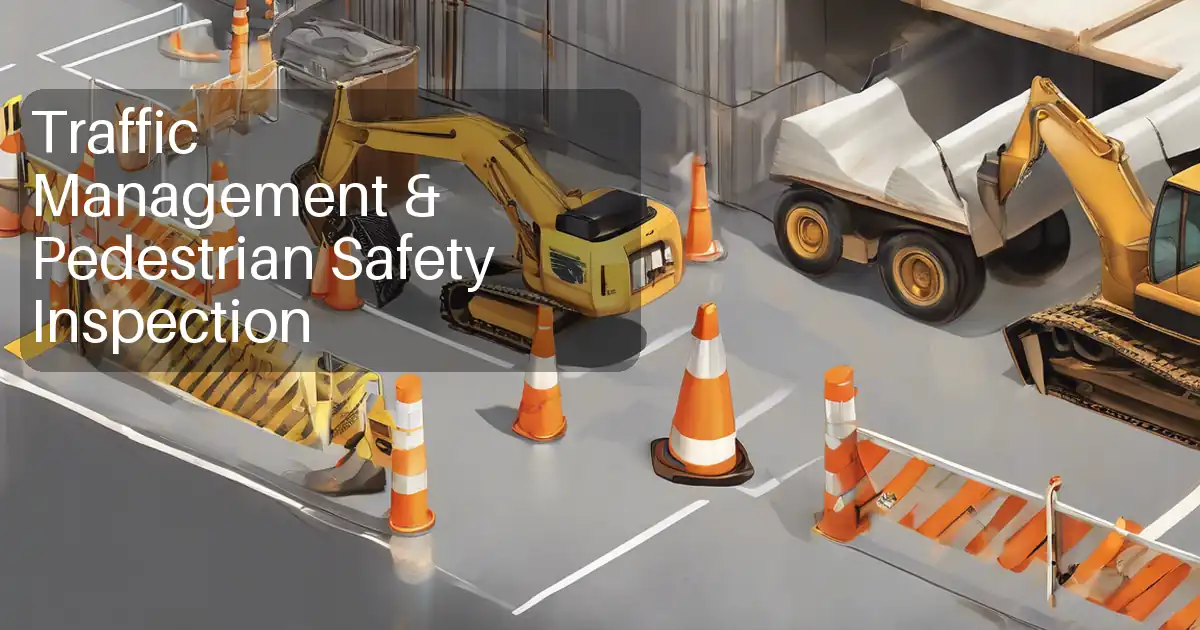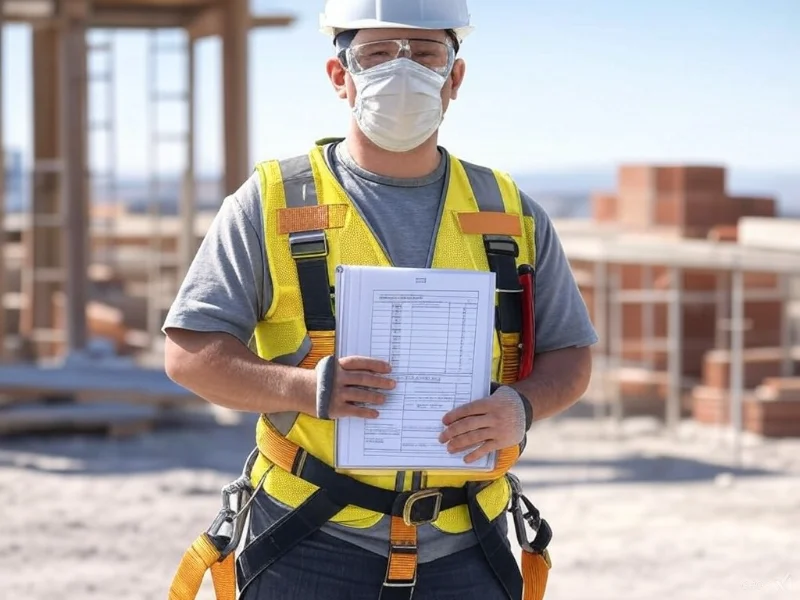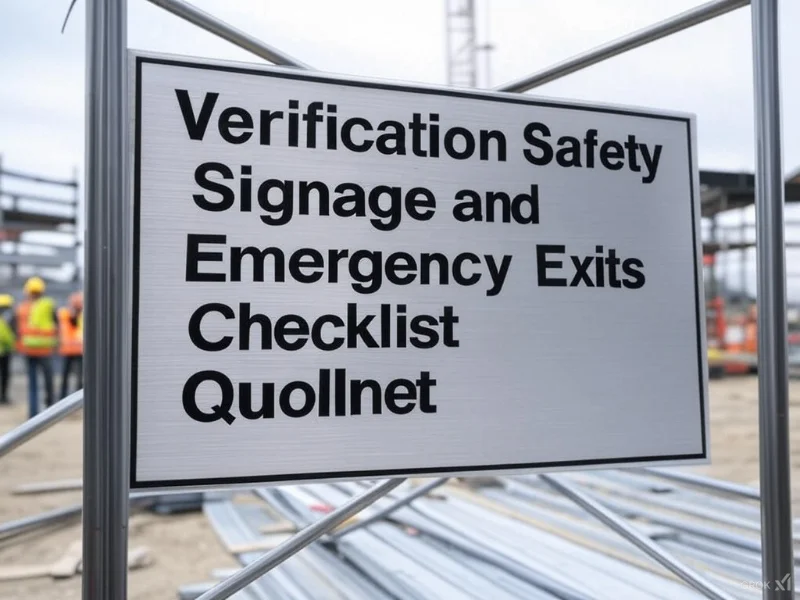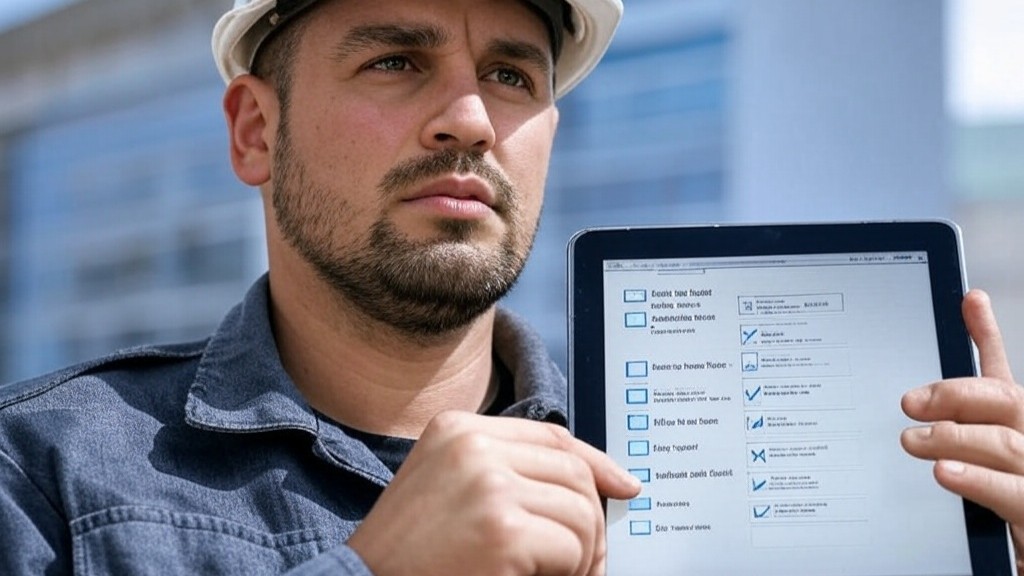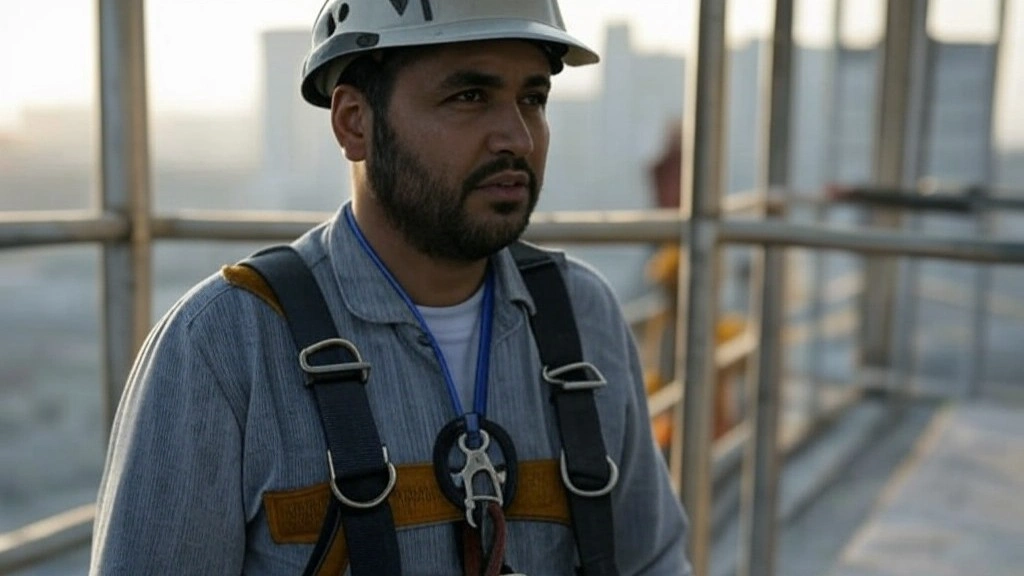Monthly Worker Training and Safety Briefing Updates
The Importance of Monthly Worker Training and Safety Briefing Updates
Ensuring the safety and well-being of workers in the construction industry necessitates regular training and safety briefings. Monthly evaluations of these programs are crucial to maintaining compliance with regulations and adapting to emerging safety challenges. This article explores the significance of these monthly assessments and provides a comprehensive checklist to guide your evaluations.
Why Regular Training Updates Matter
-
Compliance with Regulations
: Adherence to OSHA and other regulatory standards is mandatory. Regular updates ensure that training programs meet current legal requirements.
-
Adaptation to Emerging Risks
: The construction industry is evolving, introducing new technologies and methodologies that require updated safety measures.
-
Reinforcement of Safety Culture
: Consistent training fosters a culture where workers prioritize and value safety in daily operations.
Trending Topics in Construction Safety Training
To enhance the effectiveness of safety programs, consider integrating the following trending topics:
-
Mental Health and Well-being
: Addressing mental health is becoming a crucial part of workplace safety. (
OSHA
)
-
Advanced Personal Protective Equipment (PPE)
: Innovations in PPE enhance worker protection and comfort. (
NIOSH
)
-
Predictive Analytics in Risk Assessment
: Data analytics help foresee potential hazards. (
CPWR
)
-
Use of Drones for Site Inspection
: Drones provide a safer way to inspect hazardous work zones. (
FAA
)
- Safety Apps and Digital Tools : Mobile applications improve access to safety training materials. ( SafetyCulture )
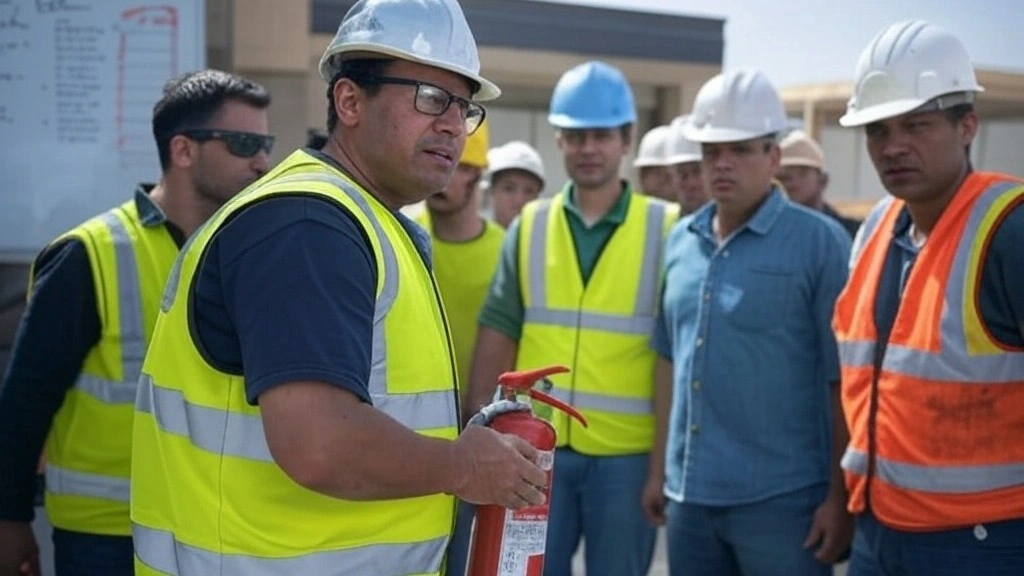
Monthly Worker Training and Safety Briefing Updates Checklist
Company Name:
___________________________
Date:
______________
Site Location:
___________________________
Supervisor:
______________
Checklist
Training Materials
☐ Update materials to reflect current regulations, incidents, and lessons learned.
☐ Include emerging topics (e.g., mental health, new PPE tech).
☐ Ensure materials are accessible and inclusive.
Training Delivery
☐ Evaluate delivery methods (online, in-person, hybrid).
☐ Use interactive tools (quizzes, simulations, VR).
☐ Document sessions (attendance, topics).
Worker Feedback & Competency
☐ Maintain updated records of certifications and competencies.
☐ Gather worker feedback for improvements.
☐ Identify workers needing refreshers or additional training.
Trainer Development
☐ Assess trainer competency and provide development opportunities.
☐ Equip trainers with latest tools and knowledge.
Compliance & Audits
☐ Conduct compliance audits and address gaps.
☐ Update safety protocols based on findings.
Emergency Preparedness
☐ Schedule and evaluate emergency drills.
☐ Update emergency plans based on outcomes.
PPE & Equipment
☐ Train workers on PPE use, maintenance, and disposal.
☐ Confirm PPE availability and inspect safety equipment.
Technology
☐ Implement new tools (mobile apps, e-learning).
☐ Train workers on new safety technologies.
Continuous Improvement
☐ Analyze training metrics and identify trends.
☐ Develop and track action plans for gaps.
Reviewed by: ___________________________ Date:______________ Next Review Date: ___________________
Downloadable Resources
To facilitate the implementation of this checklist, we offer free downloadable versions in various formats:

By regularly updating worker training and safety briefings, organizations can proactively mitigate risks and foster a culture of continuous safety improvement.
